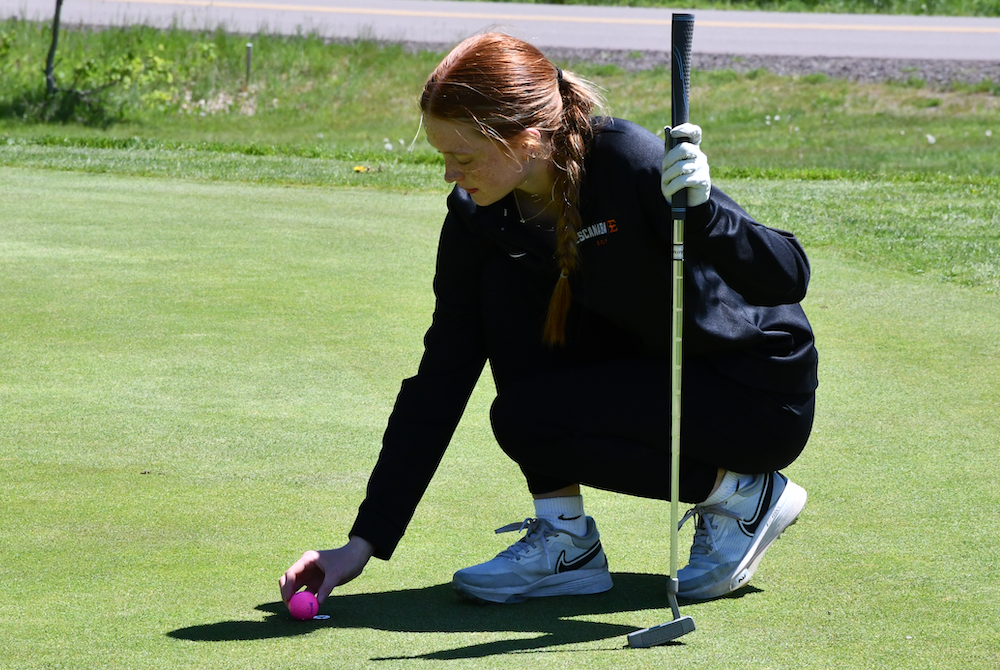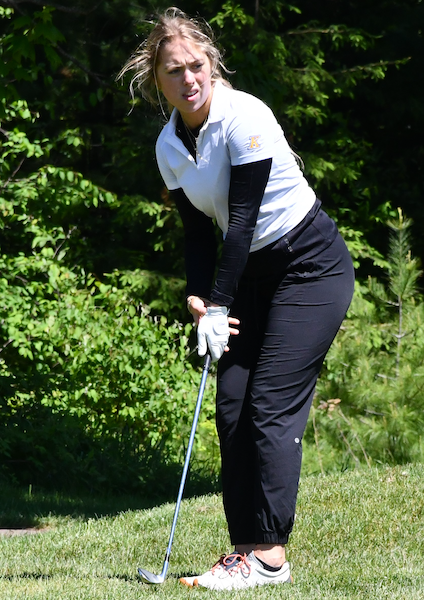
Casting Lines for Future Tournaments
August 12, 2016
By Jack Roberts
MHSAA Executive Director
The MHSAA is best known to the public for the tournaments it conducts to conclude the fall, winter and spring seasons each school year.
These tournaments, the first and largest program of the MHSAA, have survived the Vietnam War, the Korean conflict and two World Wars. They have survived the technology bubble, the housing collapse, the energy crisis and the Great Depression.
MHSAA tournaments existed at the dawn of aviation and at the time of our nation’s lunar landing. Popes, presidents and governors have changed and changed again and again, and MHSAA tournaments roll on year after year.
But the sense of tradition and permanence and inevitability of MHSAA tournaments doesn’t dissuade us from asking questions about our tournaments, even some of the most basic questions. Here are two.
Question #1
I have long been and will always be an advocate for a Ryder Cup format for the MHSAA Golf Finals, and a team tennis approach to the MHSAA Tennis Finals; but 90 years of tradition is hard to overcome. Might this be a more exciting format? Could it be co-ed? Could it reverse the decline in boys tennis participation, and increase girls golf participation? Wouldn’t it be fun to try?
Periodically, the International Olympic Committee requires each of the designated Olympic sports to defend its status, to state its case why the sport should remain a part of the Olympic program. Then, after a series or votes that retain one sport at a time, the IOC drops the sport that makes the weakest case. It does so to make room for one of the previously unlisted sports that makes the best case for inclusion.
This would appear to keep the existing Olympic sports on their toes, and to keep the Olympic movement fresh and reflective of modern trends in sports.
While I would not enjoy the controversy, I can see the potential for some positive results if the MHSAA were to invoke the same policy for determining the 14 tournaments it will provide for girls and the 14 for boys.
This might cause us to consider more deeply what a high school sport should look like, or at least what an MHSAA tournament sport should stand for.
On the one hand, we might be inclined to drop tournaments for those sports that involve mostly non-faculty coaches and non-school venues, or require cooperative programs to generate enough participants to support a team, or resort almost entirely to non-school funding, or cater to individuals more than teams.
Or perhaps this process would cause policymakers to forget traditional thinking and ask: “In this day and age, should we shake off traditional notions of sport and consider more where modern kids are coming from?” That might mean fewer team sports and more individual sports, more “extreme” sports like snowboarding and skateboarding, and more lifetime sports, meaning not just golf and tennis and running sports, but also fishing and even shooting sports.
Currently, MHSAA policy states that the MHSAA will consider sponsorship of a tournament series for any sport which 64 member schools conduct on an interscholastic basis as a result of action by the governing boards of those schools.
Should the only question be how many schools sponsor a sport, or must an activity also have certain qualities and/or avoid certain “defects?” What should an MHSAA tournament sport look like and stand for?
Question #2
Bristling from criticism that his association is a money-grabbing exploiter of children, my counterpart in another state said, “If we were running our programs just to make money, we would do very many things very differently.” I knew exactly what he meant.
Because we care about the health and welfare of students, because we mean what we say that the athletic program needs to maximize the ways it enhances the school experience while minimizing academic conflicts, and because we try to model our claim that no sport is a minor sport when it comes to its potential to teach young people life lessons, we operate our programs in ways that make promoters, marketers and business entrepreneurs laugh, cry or cringe.
If money were the only object, we would seed and select sites to assure the teams that attracted the most spectators had the best chance to advance in our tournaments, regardless of the travel for any team or its fan base. If money were the only object, we would never schedule two tournaments to overlap and compete for public attention, much less tolerate three or four overlapping events. If money were the only object, we would allow signage like NASCAR events and promotions like minor league baseball games.
Those approaches to event sponsorship may not be all wrong; they’re just not all right for us. And we will live with the consequences of our belief system.
During a typical school year, more than 20 percent of the MHSAA’s 2,097 District, Regional and Final tournaments lose money. Not a single site in golf, skiing or tennis makes a single penny. In no sport did every District, Regional and Final site have revenue in excess of direct expenses.
In fact, in only three sports – boys and girls basketball and football – is revenue so much greater than direct expenses overall that it helps to pay for all the other tournaments in which the MHSAA invests.
That’s right: invests. When we present our budget to our board, we talk about the MHSAA’s investment in providing tournament opportunities in all those sports and all those places that cannot sustain the cost of those events on their own. How much is this investment worth to students, schools and society?
These two are core questions that require our focus far in advance of talk about scheduling, site selection, seeding and the myriad matters that too often hijack our time and attention.

Medalist Scott Leads Escanaba Charge Back to Top of UPD1 Leaderboard
By
Jack Hall
Special for MHSAA.com
May 29, 2024
CHAMPION – Escanaba is back on top in high school girls golf after winning the MHSAA Upper Peninsula Division 1 championship Wednesday at the Wawonowin Country Club.
The Eskymos won their fifth Finals title since 2016 by defeating last year's champion, Kingsford, by 22 strokes (399-421). Negaunee was third, 23 strokes back (422).
“It's been an up-and-down season,” Escanaba coach Jake Berlinski said. “It's a short season. The girls have worked so hard and in the end of it, we came through. The girls played great when it mattered the most. That's all you can ask for.”
Escanaba was led by sophomore Kamrie Scott, who won the medalist honor by shooting an 83. She was eight shots clear of runners-up Grace Maki (Kingsford) and Abby Dart (Houghton), who both carded 91s.
“This course, there are some holes that are tough, but I think I played it pretty well,” Scott said. “I was hitting them straight, and my putting was good, so things were going well. I was just going for the pin today. I was making putts, so it was working.”
Maki battled over the final four holes to earn a share of the runner-up honor for the Flivvers, and for herself, personally.
“I love this course,” Maki said. “I had some struggles. I had some 6s out there, but I did my best. My best hole was actually No. 2, which I birdied.”
Negaunee's Kennidy Glasheen and Marquette's Abby Luke finished tied for fourth, both with 96s. It was the last U.P. Finals for Luke, who made an impression with a hole-in-one at the 2023 championship tournament held on the ultra-tough Sage Run Golf Course.
 The only other sub-100 score this time around was turned in by Escanaba senior Maddie Wilson, who carded a 97 to finish in the sixth spot. It was her fourth UP Finals, and by far her highest finish on the leaderboard.
The only other sub-100 score this time around was turned in by Escanaba senior Maddie Wilson, who carded a 97 to finish in the sixth spot. It was her fourth UP Finals, and by far her highest finish on the leaderboard.
“It feels good, but it's a little bit sad,” Wilson said. “I'm glad we were able to pull away for our last year. Personally, for me, I just tried to stay really positive, and not get myself down during a bad shot. And especially tried not to get tired toward the end, because walking 18 holes is a lot. And I really focused on my putting today, which I feel helped me in the long run.”
Kingsford came out of nowhere in 2023 to win its first girls golf U.P. title in school history, and this year the Flivvers rallied down the stretch to take second place ahead of Negaunee. The Miners occupied second spot for most of the round before the Flivvers ended up with the runner-up trophy by one stroke.
“We saw the course was playing tough, across the board; top to bottom, scores were a little higher than normal,” Kingsford coach Ryan Pepin said. “The girls battled right to the end. We weren't sure how it was going to finish up. We're really proud of them. Great season.”
Pepin had just four golfers this year (three seniors and one sophomore), but they still managed to win the majority of their matches in the Great Northern Conference during the regular season.
“Our girls performed well,” Pepin said. “We went to battle every time with only four. Our seniors had great careers, the last two years, especially.”
Negaunee coach Dustin Hongisto said it was a great day for his group of Miners.
“I felt they played awesome,” Hongisto said. “They were just kind of a step back from these (top) teams all year, but all five of them played awesome today. I was really proud of my No. 1 girl, Kennidy. She shot her low round of the year. The fact that they lost by one at the end was a bummer, but I'm proud of them.”
Scott says it felt great to win the individual medalist honor, but she was even happier that the whole Escanaba team pulled through.
“I'm really proud of us,” she said. “We worked really hard this year, and it paid off. Just staying positive, and I think that helped us.”
Fellow Eskymos senior Sophia Derkos, playing in her fourth U.P. Final, summed it up.
“We work really good as a team,” she said. “We're very positive toward each other. There's a lot of hazards on this course, like waters and trees. I was just trying not to hit 'em in it, and it was hard, but we made it!
PHOTOS (Top) Escanaba’s Lilly VanDamme lines up a putt during the Upper Peninsula Division 1 Final at Wawonowin Country Club. (Middle) Kingsford’s Ela Rizzo sends an approach shot during her round Wednesday. (Photos by Jack Hall.)

